 Leading Blog | Posts by Month |
 Leading Blog | Posts by Month |
04.21.25

Ready to Win: What I Learned About Preparing for Sustained Success as a Basketball Coach
ACHIEVING sustained success hinges on consistent and well-conceived preparation. If you fail to work hard and think hard during preparation, no amount of talent or performance under pressure is going to save you. This is something so simple and easy to understand, yet it’s a shortcoming I see over and over in sports, business, and life. I was the head coach of the University of Kentucky women’s basketball team for 13 seasons. It was a terrific ride that included three visits to the Elite 8 of the NCAA tournament, a Southeastern Conference (SEC) championship, and three SEC Coach of the Year awards. Preparation was key to our success. To give a very basic example of the importance of preparation in basketball, let’s say it’s nearing the end of a college basketball season, and a team is gearing up to play a tough conference game. The coach has watched enough video to design a game plan that exploits the weakness of the opponent. The plan will rely on lots of full-court press and pressure defense. The coach has correctly identified the perfect plan in terms of strategy — the upcoming opponent is definitely weak in handling pressure for a full game. However, there’s a big problem. The coach’s own team isn’t physically capable of sustaining the strategy. Compared to the rest of the world, the athletes are no doubt in good physical shape. But they aren’t in good enough shape to apply the relentless pressure that would likely win the game. How many businesses struggle with this same concept? Let’s say you’re a leader in a company that relies on a complex sales process with a long cycle. What your team is doing right now to make initial contact with prospects will directly impact whether you’ll meet your sales goal several months from now. You may already be losing that “game” right now, and nothing your team does later can make up for it. There’s another huge problem for leaders who fail to get their teams ready to win: they’re guaranteed to lose the confidence of their team. People don’t like to lose, but even worse is feeling like you’re in a no-win position. If you don’t get your team ready to succeed, confidence erodes. Eventually, if it happens enough times, you’ll be a leader in name only (and maybe not even in name if you lose your position because of it). As a leader, you show your team exactly how much you care about them when you place a premium on preparation and accountability. Great leaders are honest enough to consistently hold people accountable for the process and habits of preparation. At a high-level, the journey to great preparation is broken into two parts. The first part is about the mindset you need — the “thinking filters” that go into your pursuit of success. The second part involves consistently applying a framework of constant preparation. Creating a habit of mind that prepares you for success involves: 1. Evaluating your definition of success. Get clear on what success means to you. Hazy visions and unclear expectations will crush any belief in sustained success. The best place to start is honestly recognizing the unique set of gifts you have as a person. When you recognize and acknowledge your gifts, you can then take the next step and identify where you can best use those gifts to contribute your very best to the world. Ask yourself: What value can you bring, and does it fill you with satisfaction to deliver that value to others? 2. Testing your definition of success against reality. Visions of pie-in-the-sky success aren’t a way of “being positive;” they’re just being unrealistic. If a small e-commerce site CEO says, “In two years, we’re going to exceed Amazon in sales,” no one will want to climb aboard. For any vision of success, large or small, ask yourself a simple question: Do I really believe this is an attainable goal? 3. Deciding to believe in yourself. I think that many people underestimate the role of committing to a decision to believe in themselves. Belief in yourself is about understanding that you have the necessary skills, talent, and developmental abilities to enjoy consistent and long-term accomplishments. To decide this is to say, “Yes, I’m taking responsibility for this belief and affirming that it’s true.” Additionally, applying a framework of constant preparation involves: 1. Getting crystal clear on your goals. Once again, you want to be realistic when you set your goals. Determine if your goal can be measured and what those measurements should be. Think of a clear goal as a lens that helps you see better what’s a useless diversion versus a positive pursuit. Such clarity enables you to say “no” to distractions and “yes” to worthy activities. Also important is creating specific subgoals that will comprise the steps leading to the achievement of your goals. 2. Create a strategy for how you’ll prepare to meet those goals. Essentially, a strategy has to come from your strengths and core competencies; it shouldn’t go against your identity or values. Ask yourself: What are my core competencies, and how can I use them to create the right strategy? For example, I sincerely like connecting with people. So, with any preparation strategy, I ask myself, “Will this task help me build a personal connection?” Once you begin implementing your strategy, make sure to evaluate it regularly and objectively. 3. Execute the details of the strategy with maximum effort and accountability. Five key areas that will guide you in executing a powerhouse preparation plan include: Prioritization, Timelines, Responsibility and Accountability, Resources, and Curiosity. Make decisions on what tasks have the highest priority. Decide how best to spend your time. Put in place accountability parameters. Maximize your resources. And be open to what you could explore further. Once you’ve developed the mindset and defined the framework for a powerful preparation regimen, you’re ready to execute your preparation blueprint that will lead to sustained success.  
Posted by Michael McKinney at 06:08 PM
04.18.25

The Leadership Blind Spot: Why Leaders Must Invest in Their Own Well-Being
STUDIES show that executive mental health is in a precarious state: 55% of CEOs in a recent 2024 study, for instance, self-reported they were having issues with their mental health. Given how private leaders tend to be about the pressures they’re under, imagine how many haven’t come forward. There’s an unspoken truth in high-level leadership: CEOs and executives bear the weight of their organizations alone, whether they admit it or not. No matter how many advisors, direct reports, or leadership partners surround them, they remain the ultimate decision-makers. Most also operate under the assumption that their primary role is to support everyone else — driving growth, ensuring profitability, and managing crises. Unlike mid-level managers, who have peers to turn to, CEOs and executives often find themselves with limited avenues for real support. Also, unlike mid-level managers, leaders are expected to lead at a relentless pace. Between balancing market pressures, investor demands, internal team dynamics, and personal ambition and managing the inherent isolation that comes with the job, executives’ own well-being takes a backseat. I call this the leadership blind spot. It should be no surprise to anyone that, over time, this burden takes its toll. Chronic stress, anxiety, and even physical health issues creep in, often unnoticed, until they start affecting performance. A leader’s unchecked sacrifice leads to burnout, poor decision-making, and diminished long-term effectiveness. Further, when a leader operates from a place of exhaustion, the entire organization feels it. Productivity suffers, culture weakens, and critical missteps become more frequent. The leader’s blind spot becomes the organization’s as well. Build a Core Dream Team If sustained success is the goal, then leaders must stop treating personal well-being as optional and start seeing it as a strategic investment. I was there myself and I’ve seen plenty of colleagues in the same position. But there’s a simple, commonsense way to overcome it. First, admit there’s a problem. Then, build a support team: a core dream team that focuses on a leader’s well-being, not just the usual organizational and management levers. Most CEOs surround themselves with financial, operational, and strategic advisors. However, this is a team for the lead executive, installed as a protective measure to support their personal resilience. Whether or not you believe you need them, you need them. They function as essential safeguards against the pressures of executive life. Here’s what the team should include: Personal leadership or performance coach: A leadership or performance coach serves as a sounding board, offering strategic guidance and helping executives maintain clarity amid complexity. They provide the external perspective leaders need to make better decisions and avoid blind spots (including neglecting one’s own well-being). Therapist or mental health professional: Emotional resilience is just as critical as financial acumen. Therapy equips leaders with tools to manage stress, process challenges, and maintain balance. Some of the most successful executives have publicly credited therapy for their ability to navigate high-pressure environments. The late Steve Jobs was known for seeking spiritual balance and integrating mindfulness and meditation into his leadership. In some cases, I’d even recommend a shaman over a traditional therapist—it depends on what resonates with the individual. Physical trainer: High-performing leaders understand that physical health directly correlates with mental clarity and stamina. Richard Branson has long credited his fitness regimen as a core factor in his productivity and creativity. CEOs like Tim Cook and Jeff Bezos prioritize fitness, knowing that a strong body fuels a sharp mind. Regular exercise mitigates stress, enhances focus, and boosts energy levels — key for sustained leadership performance. Nutritionist: Diet plays a direct role in cognition, mood, and overall energy. Many executives default to convenience eating — grabbing whatever’s available between meetings — without realizing the toll it takes on their performance. A nutritionist ensures they’re fueling their body and brain for optimal function over the course of an executive’s traditionally long day. Does a Co-CEO Help? I’ve been in discussions about the prospect of bringing in a co-leader or a co-CEO to share the burden. It’s a common question: wouldn’t having two people running the organization reduce the load by half?It might in the short term, but it’s rarely a sustainable solution. In the startup world, the co-CEO structure has gained traction. But I have yet to find an established company that has truly mastered this model. Consider Salesforce, often cited as a case study, in co-leadership. The organization has struggled to make it work. Marc Benioff, who founded Salesforce in 1999, first appointed Keith Block as co-CEO in 2018. But within two years, Block stepped down for undisclosed reasons. Benioff tried again in 2021, naming Brett Taylor as co-CEO. Again, it didn’t last: Taylor exited in 2023. What splitting the job doesn’t cover is the fact that the job itself requires multiple layers of support, and now an organization has two leaders who may be suffering from the same blind spot, not one. It is better to have a team surrounding the leader who can address well-being directly. High-Level Leadership Takes High-Level Health Executives often dismiss personal well-being as something they’ll “get to later.” Their schedules are packed. Their responsibilities are massive. And for many, there’s an ingrained belief that they’re somehow built differently—that they can endure more, push harder, and handle stress better than others. But the reality is the most effective leaders don’t just work hard—they take care of themselves so they can sustain that hard work over the long haul. By adopting the Core Dream Team model, leaders can protect themselves from burnout, sharpen their decision-making, and cultivate the resilience needed to thrive. Because high-level leadership isn’t just about driving business outcomes—it’s about sustaining the human behind the title. Those who recognize this truth will lead with greater clarity, impact, and longevity.  
Posted by Michael McKinney at 11:47 AM
04.17.25

Leading Thoughts for April 17, 2025
IDEAS shared have the power to expand perspectives, change thinking, and move lives. Here are two ideas for the curious mind to engage with: William Vanderbloemen on complaining: “Complaining gives us a lot of positive reinforcement. It makes us think we’re smarter than the powers that be, and it helps us bond with a group. Ask anyone who is friends with their very first coworkers from decades ago. Did breakfast sandwiches in the cafeteria and half-day summer Fridays bind them? Or was it a common enemy and a mutual sense of injustice that they could vent to another about? But complaining isn’t all it’s cracked up to be. It has a negative impact on your brain and, not surprisingly, a negative impact on your company culture. It’s better to be a Solver.” Source: Be the Unicorn: 12 Data-Driven Habits that Separate the Best Leaders from the Rest Rasmus Hougaard and Jacqueline Carter on using AI to enhance creativity: “One of the foundations of creativity is being curious and asking questions like What if? Why not? And What else? Human beings are great at asking these types of questions. But unfortunately, we’re limited in our answers because of our experience, knowledge, and biases. Although AI has limitations because of its programming, it can be a terrific creative partner by encouraging our curiosity. With AI, we can ask more questions, get more answers, and bring more fun into the creative process. Many of us can probably relate to painful past experiences of staring at a whiteboard, trying to come up with new, divergent or original ideas. Well, Al can be of help in those situations. Used properly, it can be a great generator of initial ideas, which can help inspire creative thinking. Al can also answer questions and punch holes in an argument or a thesis. Fundamentally, it’s more fun and cognitively easier to ask questions than it is to come up with answers. AI can transform brainstorming sessions into “question-storming sessions,” which can be inherently more enjoyable and engaging and can ultimately produce a greater number of creative outcomes.” Source: More Human: How the Power of AI Can Transform the Way You Lead Look for these ideas every Thursday on the Leading Blog. Find more ideas on the LeadingThoughts index.
Posted by Michael McKinney at 03:59 PM
04.14.25

Challenges Facing Women Negotiators
HISTORICALLY, women have faced significant hurdles in employment negotiations. Here’s what we know about these barriers, plus strategies leaders can use to improve fairness in the workplace. The Barriers that Women Face In 2006, Carnegie Mellon University professor Linda Babcock and her colleagues published research showing that women tend to initiate negotiations, particularly salary negotiations, significantly less often than men do. The findings appeared to at least partially explain the enduring pay gap between men and women, which has remained frustratingly stable from 2002 to 2023. In a 2007 study, Harvard Kennedy School professor Hannah Riley Bowles, Babcock, and California State University professor Lei Lai found that evaluators penalized female job candidates who asked for higher pay, but not male candidates. Evaluators viewed women who asked for greater compensation less favorably than men who did so and were less interested in working with the women the future. Women appeared to face a catch-22: If they asked for more, they risked being viewed negatively. About 20 years have passed since research on gender differences in negotiation and tailored salary negotiation tips for women began to emerge. Have things changed? Yes and no. On the one hand, evidence suggests that many women are negotiating compensation more assertively. Unfortunately, however, these efforts have failed to move the needle on the gender pay gap. Women Do Ask In a 2024 study, researchers Laura Kray (University of California, Berkeley), Jessica Kennedy (Vanderbilt Business School), and Margaret Lee (UC Berkeley) surveyed 990 graduates of a top U.S. business school between 2015 and 2019 about whether they negotiated the salary of their first post-MBA job. The women reported negotiating salary more often than men: 54% of women said they did, while 44% of men did. And in a survey of nearly 2,000 B-school alumni, Kray and colleagues found that 64% of women and 59% of men reported negotiating for promotions or higher compensation. It seems that after the message on gender and salary negotiations came out around 2007, both men and women—but especially women—began to negotiate compensation more frequently. Nonetheless, recent female MBA graduates still earn less than their male peers: 88% of men’s earnings, a gap that widens to 63% after 10 years, report Kray and her team. If Salary Negotiations Aren’t the Problem, What Is? “Our research shows that women are willing to do their part to close the gender pay gap,” says Kennedy. “Unfortunately, negotiating well isn’t enough to close the gender pay gap. It’s not the source of the problem.” If differences in men and women negotiating salary isn’t the source of the gender pay gap, what is? “Economic studies show that the gender wage gap is explained more by differences in men’s and women’s career trajectories than by how men and women are paid for the same work,” according to Bowles. “We will make faster progress toward closing the gender wage gap by getting more women into high-paying jobs than by negotiating a little more money in lower-paid occupations.” 3 Strategies for Reducing Bias in Employment Negotiations It’s smart for all of us to proactively negotiate our compensation, benefits, and work roles throughout our careers. But workers can only do so much on their own. To promote fairness, organizational leaders can take the following steps. Institute more flexible, family-friendly policies and structures. This can include persuading people of all genders to take parental leave to creating more “substitutable work” that doesn’t require high earners to work grueling hours. Reduce bias in hiring and promotion. In their new book, Make Work Fair: Data-Driven Design for Real Results, Harvard Kennedy School professors Iris Bohnet and Siri Chilazi argue that fairness initiatives should be built into organization-wide systems. Setting clear salary ranges and standardizing job interviews and performance evaluations can make job processes fairer for all employees. Educate and mentor. Organizations can establish mentoring programs to help women, minorities, and others feel more comfortable negotiating assertively on their own behalf. They can also educate employees about common biases that negotiators face at the table and how they hold us all back. When people believe the “women don’t ask for more” narrative, they are less likely to support laws and policies aimed at reducing bias in negotiation, Kray and colleagues found. Spreading the word that women increasingly are negotiating as assertively as men could help build support for fairer policies. By recognizing gender inequality in negotiations as a shared problem, we can both lessen the burden on women and promote more productive negotiations. 
Posted by Michael McKinney at 11:52 AM
04.11.25

Transition Points Are Fertile Ground for Reinvention
I didn’t start out as a founder. I started out as an arms dealer. Not in the literal sense — but in the early days of Silicon Valley, I was on the front lines of sales, business development, and corporate development. I knew how to close deals, spot trends, and move fast. I was valuable but always on the periphery of the real action. I was building. I watched teams turn ideas into companies and products into platforms. After a while, it became clear — I was contributing but not creating. So I made a move. I joined Ooma as a founding executive. We set out to reinvent home phone service and take on the telcos. It was bold and ambitious and taught me what zero to one really looks like. From there, I co-founded Jangl, a privacy-forward voice platform that lets people connect without giving out their real number. We raised money, built the team, and got real traction. Then, the market shifted, and we hit the wall. That kind of moment can knock you down — or wake you up. What I’ve learned across every chapter since is this: transition points represent some of the most valuable terrain upon which you’re ever likely to stand. They’re confusing, uncertain, and usually uncomfortable. But they’re also where reinvention happens — if you let it. Too many people try to erase what came before when they make a change. I’ve done the opposite. I’ve treated every shift in my career like compound interest. Sales taught me how to tell a story. Founding taught me to see around corners. Product leadership taught me to zoom out and engineer systems at scale. Every new move built on the last. That’s the difference between a pivot and a reinvention. A pivot is reactive. Reinvention is expansive. Recognizing when it’s time But how do you know when it’s time for a reinvention? Here are five signs that I’ve learned to watch for:
The key is to treat transition points not as gaps, but as launchpads. When Ooma ended, I didn’t run back to sales. I leaned harder into product. After two more startups, I shifted into leadership roles at companies like Facebook and VEVO, then helped build Disney+ and led streaming product and engineering at TelevisaUnivision. That kind of reinvention required unlearning, taking risks, and putting myself in uncomfortable rooms. But every time I did it, I unlocked new capabilities. Carrying forward what matters The trick is not to over-index on any one chapter — the startup that fails; the role that runs its course; the team that changes. All of it is temporary. What’s permanent is what you carry forward — the grit, the pattern recognition, the following your hunches. That’s the raw material for whatever comes next. Reinvention isn’t something you do once. It’s a muscle. And the people who stay relevant, energized, and dangerous in the best ways are the ones who keep flexing it. If you’re standing at a crossroads, don’t freeze. Don’t cling. Ask yourself: “Am I building something that reflects who I am right now?” And if the answer is no — what’s stopping you?  
Posted by Michael McKinney at 09:01 AM
04.10.25

Leading Thoughts for April 10, 2025
IDEAS shared have the power to expand perspectives, change thinking, and move lives. Here are two ideas for the curious mind to engage with: Eric Potterat on putting in the practice you need for success: “Effort is perhaps both the easiest and hardest aspect of mindset to practice. Easy because you know what needs to be done: more practicing, more studying, more exercising, more time. Hard because: more work. For some people (and many high performers) hard work is innate. They keep at it naturally; they don’t have to make themselves do it. But most of us are what I like to call “human”: we have a limit. When we reach that fork in our day when we could spend an hour practicing that thing we care about or rot our brain watching viral videos or reality shows, too often we opt for the videos. We’ll practice tomorrow. We suffer from (or benefit from, depending on whether you are sitting comfortably on your couch or not) an intention-behavior gap. We intend to do something, but we don’t do it.” Source: Learned Excellence: Mental Disciplines for Leading and Winning from the World's Top Performers Michael Pilarczyk on knowing what matters to you: “There’s a reason behind every choice you make. There are reasons you decide to do or not do something, and those reasons chart your course. In other words, the meaning you assign to your thoughts determines your personality, your behavior, how you feel, how you react, and what you accomplish. Everything you do has a reason. There is a close relationship between your personal values and the choices you make. And this all directly affects your behavior.” Source: Master Your Mindset: Live a Meaningful Life Look for these ideas every Thursday on the Leading Blog. Find more ideas on the LeadingThoughts index.
Posted by Michael McKinney at 04:25 PM
04.07.25

What The Senate Hearings on the Signal Chat Security Breach Reveal About the Dysfunctional Disconnect Between Internal/External Conversations
OUR internal conversations may seem inconsequential, but they determine the success of every interaction. They hold secrets to how we can have authentic conversations with others. When CIA Director John Ratcliffe and Director of National Intelligence Tulsi Gabbard recently testified before the Senate regarding the breach of security using Signal’s group chat during an attack on Yemen, their carefully measured responses revealed something profound. As they faced direct questions about the Signal chat, including an accidental text that included Jeffrey Goldberg, editor-in-chief of The Atlantic, viewers witnessed a rare moment when the divide between Ratcliffe and Gabbard’s private thoughts and public speech became apparent. Their shifting gazes and carefully chosen words highlighted a universal human struggle: the gap between what we think and what we say. This chasm creates the tension we carry, the anxiety that keeps us awake, and the misunderstandings that damage our relationships. We all have private conversations with ourselves that no one else hears — the running commentary in our minds, interpreting events, assigning meaning, and shaping our responses to the world. The stories we tell ourselves profoundly shape how we interact with the world, yet we seldom examine these narratives with the scrutiny they deserve. Instead of creating stress by tamping them down, our hidden conversations can be an untapped reservoir of wisdom. Our unprocessed inner dialogues hold insights that could transform superficial exchanges into authentic connections. Our brains as story-making machines Human beings are natural storytellers. Our brains weave narratives to make sense of experiences and create the stories we believe and live by. These internal narratives reflect our beliefs, identities, and perceptions and drive behaviors in ways we often fail to recognize. When we encounter new information, we don’t process it objectively — we filter it through existing stories about ourselves, others, and how the world works. These narratives provide comfort but can trap us in limited perspectives. When your story becomes the only story We are socially conditioned to have “the answer” and rewarded for being the smartest person in the room. Unexplored, our attachment to our narratives can get us into trouble. When we hold tightly to our version of reality — our story about what happened or what something means — we leave little room for mindful listening, alternative perspectives, and collaboration. Like the officials questioned in the Senate hearing, our inability to process and gain wisdom from our private thoughts will trap us in stress. There’s no space for productive dialogue between concerned parties, which guarantees communication breakdowns. When we fail to question our automatic interpretations, we respond to imagined threats rather than actual circumstances. We hear criticism where none exists, assume malicious intent behind neutral actions, and react defensively to perceived slights. Think about your thinking We can develop greater awareness of our internal patterns through metacognition — or thinking about our thinking and creating space between stimulus and response for more intentional communication. Here are practical ways to build this awareness: 1. Expose the stories behind your emotions. When strong emotions arise, identify not just what you’re feeling but the underlying narrative driving that emotion. Our emotions don’t drive our thinking; they’re physical upheavals of our thoughts. Ask yourself: “What story am I telling myself about this situation? What story am I telling myself that’s beneath the negative judgment?” For the officials questioned in the Senate hearing, imagine if they’d felt safe and confident enough to speak their truth and admit their mistakes. This may have led to a commitment to follow the norms that protect confidential information. 2. Mine the facts. Separate observable facts from your interpretations. If someone arrives late to a meeting, the fact is their arrival time. One could assume they are being disrespectful, or one might learn that their child had a bad morning. Grounding yourself in verifiable reality rather than assumptions creates a solid foundation for communication. 3. Process internal opinions through four essential questions When forming judgments, examine them through these lenses: • What are my desires? Identify what you want from the situation. In the Senate hearing, were the officials questioned aiming for obstruction, distraction, or disclosure of truth? • What are my concerns? Acknowledge your fears or worries. Within any opinion lies concerns about outcomes. What worries drove both questioners and the questioned officials in that hearing? Were they able to discuss them? • What power issues are at play? Every conversation involves power issues. Recognizing authority dynamics helps you to navigate conversations. The Senators had the authority to seek facts, but to what authority were the questioned officials committed? • What standards or values are shaping your opinions? Identify the principles or expectations that form the foundation of your judgment. Every judgment we have is fueled by standards that we hold mostly unconsciously. What if all parties in the hearing held the standard that upholding their oath to the Constitution was fundamental? Revealing our inner dialogues — even to ourselves — may initially feel uncomfortable. However, a willingness to examine what usually remains hidden will ultimately lead to more authentic communication. Developing awareness of our inner dialogue exposes patterns we might never notice. This heightened consciousness doesn’t just minimize internal stress — it fundamentally transforms how we connect with others. When we understand the stories driving our reactions, we can choose whether to believe them. As we separate facts from interpretations, we create space for curiosity rather than judgment. And by examining our opinions through multiple lenses, we develop more nuanced perspectives that foster genuine understanding.  
Posted by Michael McKinney at 11:18 AM
04.04.25

Why Buy-In Is the Most Overlooked Factor in Business Growth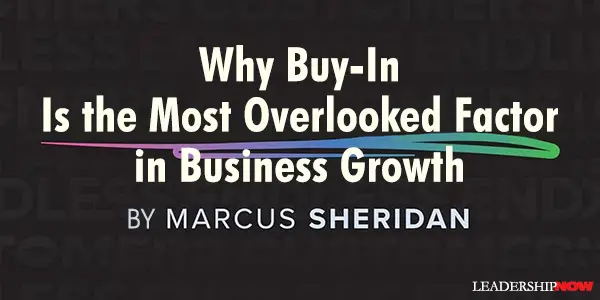
MOST business leaders assume that if they roll out the right strategy, success will follow. But the truth is, even the best strategy will fail without full buy-in from your team. Lack of buy-in is the silent killer of growth. It’s why so many marketing initiatives fall flat, why sales teams resist new processes, and why companies struggle to implement real change. If your employees aren’t aligned, your customers will feel it. And if your customers feel it, they won’t trust you. The Real Reason Strategies Fail The biggest mistake CEOs make is assuming that once they decide on a direction, their team will automatically follow. But people don’t resist change because they’re lazy or unwilling—they resist it because they don’t understand why it matters to them. If your leadership team makes decisions behind closed doors and then announces them as mandates, don’t be surprised when your employees push back—or worse, disengage entirely. The companies that thrive aren’t the ones with the best ideas; they’re the ones that get their teams to believe in those ideas. How to Get Your Team Fully Invested To build a company that executes at the highest level, buy-in can’t be an afterthought—it has to be built into your culture. Here’s how: Involve Your Team Early – People support what they help create. Instead of rolling out a fully baked strategy, bring your team into the conversation from the start. When employees feel heard, they’re far more likely to take ownership of the outcome. Communicate the Why—Not Just the What – Telling your team what to do isn’t enough. They need to understand why it matters. If they don’t see how a new initiative connects to their success, they won’t give it their full effort. Remove the Fear of Change – Many employees resist new initiatives because they’re afraid of failure or increased workload. Address these fears head-on by showing how changes will make their jobs easier, more impactful, or more rewarding. Model Buy-In from the Top – Leaders set the tone. If the CEO and leadership team aren’t visibly invested in a new strategy, don’t expect the rest of the company to be. Buy-in starts at the top and cascades downward. The Bottom Line: Your Strategy is Only as Strong as Your Buy-In A great strategy without buy-in is worthless. The companies that grow the fastest aren’t just the ones with bold ideas—they’re the ones that get their entire team aligned, engaged, and committed to execution. So, before you ask, “Is this the right strategy?” ask yourself, “Does my team actually believe in it?” Because if they don’t, nothing else matters.
 
Posted by Michael McKinney at 10:59 AM
04.03.25

Leading Thoughts for April 3, 2025
IDEAS shared have the power to expand perspectives, change thinking, and move lives. Here are two ideas for the curious mind to engage with: Richard S. Tedlow on speaking truth to power: “The fantasy that if you get rid of the messenger, you can render the message untrue is a powerful one.” Source: Denial: Why Business Leaders Fail to Look Facts in the Face—and What to Do About It Todd Henry on the passion fallacy: “Instead of asking ‘What would bring me enjoyment?’ which is how many people think about following their passion, we should instead ask ‘What work am I willing to suffer for today?’ Great work requires suffering for something beyond yourself. It’s created when you bend your life around a mission and spend yourself on something you deem worthy of your best effort. What is your worthwhile cause?” Source: Die Empty: Unleash Your Best Work Every Day Look for these ideas every Thursday on the Leading Blog. Find more ideas on the LeadingThoughts index.
Posted by Michael McKinney at 04:18 PM
04.01.25

First Look: Leadership Books for April 2025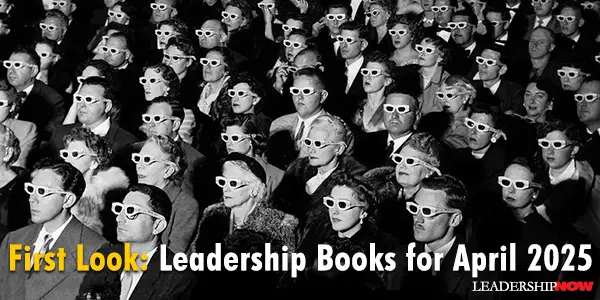
HERE'S A LOOK at some of the best leadership books to be released in April 2025 curated just for you. Be sure to check out the other great titles being offered this month.
The Psychology of Leadership offers a fresh take on leadership through the lens of groundbreaking research in positive, sports, and personality psychology. Leaders will develop what feels like mind-reading abilities for interpreting workplace personalities, hidden motivations, and group dynamics. They will learn how to inspire their organization to move mountains, improve their ability to listen, communicate and, when necessary, persuade. Along the way they will dramatically improve their own mindset and resilience.
In Master Your Mindset, bestselling author Michael Pilarczyk reveals a life-changing approach that has helped countless individuals transform their lives. His unique method combines powerful insights with real-life examples, showing you how to break free from limiting beliefs and reach your most ambitious goals. This book offers more than just advice―it provides a clear, actionable, and repeatable 12-step strategy to help you master your mindset and create lasting success in every area of life. With Master Your Mindset, you'll have the tools to break free from limiting beliefs and take control of your personal and professional success. A practical, life-changing guide to unlocking your full potential―whether you seek personal fulfillment, professional success, or deeper inner peace and meaning in life.
In today’s dynamic business environment, the success of any organization is deeply rooted in the quality of its internal relationships. Psychologist and organizational behavior expert Dr. Karen Bridbord offers a revolutionary guide to career success and advancement, regardless of your industry, your company’s size, or your role. This groundbreaking book sheds light on how nurturing strong work relationships can lead to unmatched productivity and greater overall wellness throughout the organization and among its staff. The Relationship-Driven Leader explores the profound influence of everyday interactions on team experience and team performance. Bridbord emphasizes the importance of “micro-moments” in leadership to spark significant improvements. This book empowers you to take the first step toward becoming the leader everyone aspires to work with by enhancing your leadership skills, boosting workplace productivity, and mastering innovative conflict-management techniques. By focusing on well-being through relationship-building, you can create a healthier, more engaged, and more productive team.
Written for leaders of high-growth companies, a framework for predicting and overcoming obstacles to scale successfully. Growth is hard. CEOs must constantly evolve to make it through the gauntlet of never-ending challenges. This book is written for leaders like you who recognize that success depends upon harnessing your people’s strengths to build a high-functioning and resilient organization. In Running the Gauntlet, the duo of veteran strategic advisors shows you how to predict and prepare for the challenges you’ll encounter as your company moves through four stages of growth, how to use key levers to proactively drive organizational growth including sharpening focus, calibrating culture, strengthening leadership, and elevating talent, how to evolve your role as CEO as the organization becomes larger and more complex and how to avoid the pitfalls that derail growth.
Our lives are guided by our attachments. When they’re healthy, they offer us security, pleasure, and validation. But for many of us, something has gone awry. We’re distracted and sabotaged by these attachments, like control, perfection, or success, which morph into internal conversations that undermine our best selves—ultimately inhibiting our ability to live a full, happy life. The antidote to the poison of unhealthy attachments? Trading them in for positive aspirations. Rooted in a blend of Western and Eastern psychology, supported by research, and told through the stories of real people from all walks of life who have overcome their own self-sabotage, Detach walks readers through the ten unhealthy attachments many of us carry, as well as the ten positive aspirations we can use to combat each one of them.
Throughout his 40-year career, Admiral McRaven has experienced every manner of calamity imaginable. From managing failed hostage rescues to responding to student unrest, McRaven has learned how to successfully navigate crises—those moments that push the limits of your experience and challenge your confidence, when leadership skills alone may not be enough. Conquering Crisis provides a new set of tools for facing these stressful moments with poise. It breaks crises down into five phases assess, report, contain, shape, and manage—and provides concrete steps to come out the other side stronger. With incredible personal stories, thought-provoking parables, and memorable lessons, Admiral McRaven sheds light on the ways we can rise to the occasion in times of crisis and act as leaders, no matter the situation.
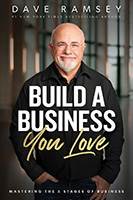  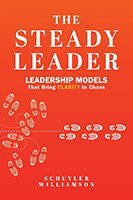 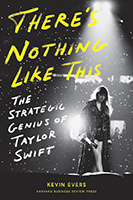
“You can't think well without writing well, and you can't write well without reading well. And I mean that last "well" in both senses. You have to be good at reading, and read good things.” — Paul Graham, Y Combinator co-founder
Posted by Michael McKinney at 06:00 PM
|
BUILD YOUR KNOWLEDGE


How to Do Your Start-Up Right STRAIGHT TALK FOR START-UPS 
Grow Your Leadership Skills NEW AND UPCOMING LEADERSHIP BOOKS 
Leadership Minute BITE-SIZE CONCEPTS YOU CAN CHEW ON 
Classic Leadership Books BOOKS TO READ BEFORE YOU LEAD |
|